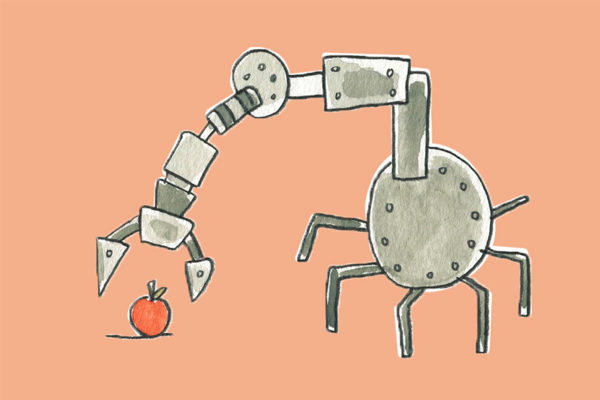By Raghunath Nageswaran.
If economic exchange determined by the market forces of demand and supply provided the right incentives for production, how should the exercise of measuring the economy and its performance be undertaken? When did the project of measuring the economy take off and why? Does Gross Domestic Product (GDP), the summary indicator of economic activity, reflect the significant facts of our economic life? And if it doesn’t, what can be done to ensure that it does, going forward?
David Pilling offers some thoughtful and interesting answers to such questions in his book The Growth Delusion: The Wealth and Well-Being of Nations. The book is not a tirade against economic growth; it is not an anti-growth or a de-growth manifesto. Pilling makes his intention to broaden the conversation on growth very clear by including the words “wealth” and “well-being” in the title, concepts that go beyond the narrow definition of economic growth as an expansion in the flow of goods and services measured in monetary terms.
That GDP growth has become a proxy not just for the economic success of a country as measured in material terms, but also for the well-being of its people is a stark reminder about our fixation with an indicator that was devised to measure physical production during the interwar period. The notion of “economy” as an entity to be managed and captured in quantitative/monetary terms by experts came into vogue less than a century ago during the Great Depression years after Simon Kuznets presented his survey of the economic performance of the United States in the report National Income, 1929-32. This effort marked the birth of systematic national income accounting. But Pilling reminds us that:
Kuznets was striving for a measure that would reflect welfare rather than what he considered a crude summation of all activity. He wanted to exclude illegal activities, socially harmful industries, and most government spending. On many of these issues he lost.
This must serve as a useful counterpoint while arguing with uncritical enthusiasts of GDP, who baulk at the idea of using a different set of measures for capturing social welfare in its truest sense—people possessing the agency and capabilities to do things they have reason to value, as Prof. Amartya Sen has persuasively argued in his writings. GDP is not reflective of such a holistic idea of welfare because that would entail an assessment of the distributional impact of growth on various sections of the society, which the GDP isn’t equipped to measure or capture.
One must remember that the measurement of GDP is not a value-free exercise. A whole range of value judgements and assumptions are involved in the demarcation of the production boundary, therefore it shouldn’t be regarded as an innocent measure of economic activity. It is a deeply moral and political affair. The starkest example is the exclusion of household activity undertaken mostly by women, which is considered “unproductive” by conventional national accounting norms. Several scholars have developed and applied tools that measure the amounts of unpaid work done by women using time-use data and by imputing values to an entire gamut of chores, from dish-washing through breast-feeding to child-rearing.
Regarding the efficacy of economic growth as a means of furthering human welfare, there is a view among well-meaning sceptics that developed economies must get over their obsession with unfettered growth enabled by the endless cycle of production and consumption. In the book Doughnut Economics, economist Kate Raworth uses the term “growth agnosticism” to drive home the point that developed countries should ensure that their people continue to thrive irrespective of the trends in economic growth.
While this is the outlook for the developed world, there seems to be a resounding faith in the indispensability of economic growth as a nostrum for developing countries. It rests on the belief that only faster growth can lift people out of poverty and generate more resources for creating a redistributive design. This is a contestable argument, given the inequality enhancing nature of economic growth we have seen in different parts of the world in the last three decades. It would be instructive to go beyond standard narratives to acknowledge the fact that growth doesn’t automatically translate into better living conditions for people, especially when the fruits of growth are mediated by the various fault-lines in the society, not to mention the very framework within which economic growth of a predatory variety takes place.
There are interesting and practicable proposals for ensuring that GDP is reflective of the “trade-offs” involved in our single-minded pursuit of economic growth in part three of the book. It is in this section that Pilling turns the spotlight on “the wealth and well-being of nations.” The chapter titled Wealth is a culmination of Pilling’s effort to indict us for our collective disregard for natural ecosystems from which we draw all our resources and inputs to undertake various economic activities. He draws our attention to the crassness and instrumentalism that characterize our ambition of maximizing current incomes. He says:
Recording today’s national income offers no help whatsoever when making intergenerational decisions. The signal it sends is to maximize growth today no matter what the impact tomorrow. At the extreme, one generation might use up all a nation’s forest cover and all its oil reserves in the interests of double-digit growth and in the expectation that future generations will somehow sort things out. Today a government pushing such policies would point to rapid growth as a justification for its actions.
This short-sighted approach to resource use and management has its origins in the theory that defines efficiency in most primitive terms: make the most of existing resources by allocating those to the profitable areas of production, which is determined by the existing pattern of income distribution. We need to recognize that the humane way of managing natural resources is to augment them and not depleting them for current consumption purposes. That way, both efficiency and equity concerns can be addressed as we allow resources to regenerate themselves and leave behind enough resources for posterity. Pilling’s conversation with the sagacious environmental economist Partha Dasgupta is by far the most illuminating section of this book. After positing that we need to take a balance-sheet view of economic progress to get a big-picture view of the state of our resources, Pilling shares nuggets of wisdom offered by Dasgupta. Dasgupta takes the broadest possible view of wealth/assets and says that:
Contemporary models of economic growth and development regard nature to be fixed, an indestructible factor of production. The problem with that assumption is that it is wrong. Nature is a mosaic of degradable assets. Agricultural land, forests, wetlands, the atmosphere—more generally, ecosystems—are assets that are self-regenerative, but can suffer from deterioration or depletion through human use.
The enduring impact of Jeremy Bentham’s utilitarianism can be evidenced by the fact that individual utility, expressed in terms of market price, is still considered to be the best proxy for the subjective well-being of human beings, and it forms the bedrock of the measurement of social welfare in many theoretical exercises. The utilitarian way of looking at happiness and well-being has been the dominant principle for justifying all kinds of economic decisions and actions. While the standard interpretation of utilitarianism is the maximization of overall welfare, achieved when competing economic individuals are left alone to make “rational” decisions, a more creative and humane interpretation of the principle can focus on cooperation instead of competition and solidarity as against selfishness to maximize welfare.
It is certainly nobody’s argument that alternative measures such as Bhutan’s Gross Happiness Index (GHI) and composite indices such as the Human Development Index (HDI) are necessarily fail-safe. As Pilling says in the opening paragraph of the last chapter, “if the beauty of GDP is aggregation, that is also its biggest flaw. No single number can capture all that is worth knowing in life”. The way forward is to use a dashboard of indicators that will reflect the variegated aspects of human life and the state of resources in the economy.
It is also imperative to seriously rethink the nature, composition, and distribution of economic growth in order to make growth, and its GDP measure, humane. Economic thinkers belonging to the “classical school” of economic thought believed that the question of distribution of surplus couldn’t be separated from production, as the contribution of different economic classes to social production was dictated by the prior distribution of endowments among them. To turn the focus back to ‘distribution’ we can draw inspiration and insights from the classical school.
The Growth Delusion is a highly readable and insightful book. It covers a lot of ground and the examples offered are wide-ranging. Pilling’s journalistic fervour and sharp wit make the narrative engaging. As the old Chinese proverb goes, a thousand mile journey begins with a single step. This book promises to be one such step in a long journey towards our realization that growth is a useful tool but an intolerable tyranny.
Raghunath Nageswaran has an M.A. in Economics from Madras Christian College, Chennai (India). He is a student of Indian democracy and political economy.


